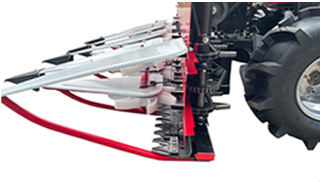Nov . 09, 2024 23:34 Back to list
Understanding the Function and Importance of Brake Drum Pistons in Automotive Systems
Understanding Brake Drum Pistons Function, Design, and Importance
Braking systems are vital for vehicle safety, and brake drum pistons play a crucial role in their operation. Whether in cars, trucks, or motorcycles, understanding how these components function can clarify their importance in overall vehicle performance and safety.
What is a Brake Drum Piston?
A brake drum piston is a component found in drum brake systems, which consist of a brake drum and brake shoes. When the driver presses the brake pedal, hydraulic pressure is generated, pushing the piston outward. This movement causes the brake shoes to expand and press against the inner surface of the brake drum, creating friction that slows down or stops the vehicle. The design and materials of the brake drum piston are engineered to withstand significant pressures and temperatures, ensuring reliable performance.
Mechanism of Action
The operation of brake drum pistons is rooted in the principles of hydraulic mechanics. When hydraulic fluid is forced through the brake lines upon pressing the brake pedal, it travels to the brake cylinders where the pistons reside. Each piston corresponds to a brake shoe, and as it moves outward, the shoe presses against the drum.
The even distribution of force is critical. If one piston operates significantly differently than the others, it can lead to uneven braking, resulting in drift or loss of control during braking. This highlights the need for regular inspections and maintenance of the brake system to ensure all pistons function smoothly.
Material and Design Considerations
brake drum piston

Brake drum pistons are typically made from robust materials capable of withstanding the harsh conditions they encounter during operation. Common materials include aluminum and cast iron, which provide durability and heat dissipation. The design of the piston must also minimize wear and tear to ensure longevity.
Innovations in design have included the introduction of reinforced seals and different piston shapes to improve performance, reduce weight, and enhance heat resistance. These changes not only lead to better braking performance but also contribute to overall vehicle efficiency by reducing the load on the brake system.
Importance of Brake Drum Pistons
Brake drum pistons are not just a small component of a vehicle’s braking system; they are essential for ensuring safety. A malfunctioning piston can lead to brake failure, which poses serious risks to the driver, passengers, and other road users. Regular maintenance, including checking the brake fluid, inspecting the pistons for wear, and replacing faulty components, is essential for vehicle safety.
Moreover, advancements in technology are leading to the development of more efficient braking systems. The integration of electronic aids and sensors can help monitor the performance of brake pistons in real-time, alerting drivers to potential issues before they lead to significant problems.
Conclusion
In summary, brake drum pistons are integral to the effective functioning of drum brake systems. Their ability to translate hydraulic pressure into mechanical force directly impacts a vehicle's braking performance. Understanding their role and ensuring they are properly maintained can lead to improved safety and performance on the road. As technology continues to advance, we can expect further enhancements in the design and operation of brake systems, offering even greater reliability and efficiency for drivers everywhere. Ultimately, investing in the maintenance and understanding of components like brake drum pistons is a proactive measure for any vehicle owner committed to safety and performance.
-
HINO Industrial Solutions - ¡Ң���ຽ��е��������˾ | Advanced Technology&Reliability
NewsJul.13,2025
-
HINO Industrial Efficiency-Jiangsu Hino Industrial|Productivity Optimization&Cost Reduction
NewsJul.12,2025
-
HINO-¡Ң���ຽ��е��������˾|Advanced Industrial Solutions&Energy Efficiency
NewsJul.12,2025
-
Premium Brake Drum Iveco – Durable Drum Brake Drum & Brake Shoe Solutions
NewsJul.08,2025
-
High-Performance Brake Drum Liza for Enhanced Safety Reliable Drum Brake Drum & Brake Shoe Solutions
NewsJul.08,2025
-
High-Quality Brake Drum MAZ – Durable Drum Brake Drum & Brake Drum and Brake Shoe for Optimal Performance
NewsJul.07,2025
